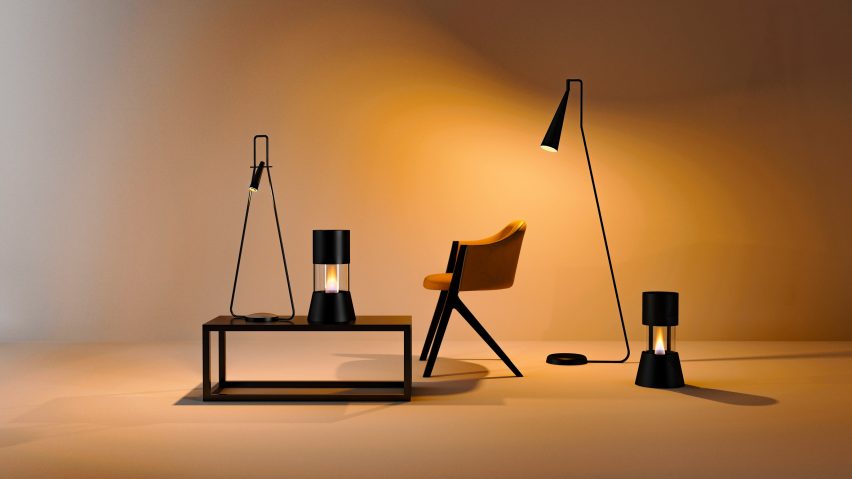Promotion: an installation informed by the stars and their distance to Earth is included in a number of projects by students at Istituto Europeo di Design (IED), which focus on the use of light.
The projects by IED students highlight the benefit of using light to enhance the social connections between people, the need to design self-sufficient energy systems and how light can also be used to educate people on ancient storytelling methods, such as calligraphy.
According to IED, the school takes a multidisciplinary approach to design and aims to showcase how different design methods and viewpoints can help the development of future products and technologies.
"Light has always been one of the big obsessions and concerns of humankind finding and through it, many inventions, beliefs and research emerged," said IED. "Light is an indispensable source of energy for development and growth."
"It even has the power to change our habits. In this sense, design can give important answers on how to transform, amplify and communicate light," the university continued.
In a number of projects, IED design and visual arts students have explored light through new ways of using materials, colours and shapes.
One example is an installation called Slow Light by IED Barcelona design and visual arts students Alain Blandon Gaba, Charlotte Paez, Hadil Hassan, Helena Langlois, Lia Ferreiro, Lucienne de Waal and Rodrigo Triana, which represents the stars and constellations.
The installation aims to raise awareness of energy consumption while the observer "plays with light and its possibilities".
Slow Light consists of a circular structure made up of 24 tubes. The tubes are made from recycled and rented materials to reduce waste. When illuminated, the tubes project different light effects onto a number of screens.
According to IED, the installation works without electricity and instead, observers "give it life" by focusing their mobile phones' flashlights onto the installation.
The tubes are located at different heights, with the aim of promoting inclusive participation to demonstrate "that we are all necessary participants and can all contribute to driving change".
"Slow Light also reminds us how light pollution caused by artificial lights prevents us from seeing the stars in the night sky," said IED.
This project was also presented at the 30th anniversary of the festival Sónar+D in Barcelona, in the Sónar+D section – an electronic music festival and digital culture platform.
Another IED Madrid student project is Viure by product design student Celia Alonso, which is made up of three domestic objects that aim to remind viewers to be present at the moment and "embrace the passing of time".
The project intends to help users deal with loss and comprises three objects: a lamp, mirror and candle.
The lamp – called Pure – represents childhood and reflects on the effect that light has on dichroic glass to create "peace, wellbeing and a relaxing atmosphere".
Sacrorum is a mirror that aims to enable the viewer to become aware of the present through their own reflection, while "I remember" is a candle that encourages users to reflect on "how time goes by so fast but also remembers those that have left".
A third project by IED Caglari student Gabriele Onnis named Phos, spotlights alternative energy sources and explores the growing need to design self-sufficient systems in response to the emergencies of our time such as climate change.
Phos is a lighting system for the home, consisting of two elements: a bioethanol fireplace – fuelled by the fermentation of biomasses – and a rechargeable lamp, which is designed to generate and store heat through energy.
The design is described as a "transportable luminous body, powered by thermoelectricity as a celebration of two fundamental attributes of life: light and heat".
In a fourth project, IED Firenze – located in Florence – created a calligraphy performance during Dimora Luminosa at F-Light Festival with calligrapher Luca Barcellona and visual artist Simone Massoni transforming the facade of the Basilica of Santo Spirito into a "white canvas" where calligraphy was projected onto the building.
The project demonstrates how technology has allowed the modernisation of "ancient ways of telling stories".
"The light became a meeting point where the past and future connected," said IED of the project. "Where tradition and technology emerged to tell stories through visual arts like students of the master in graphic design from IED Firenze do."
"But, still, like in the old times, light has the power to make people gather and learn, share and celebrate as a community."
To learn more about IED, including its campuses and courses, visit its website.
Partnership content
This article was written by Dezeen for IED as part of a partnership. Find out more about Dezeen partnership content here.

